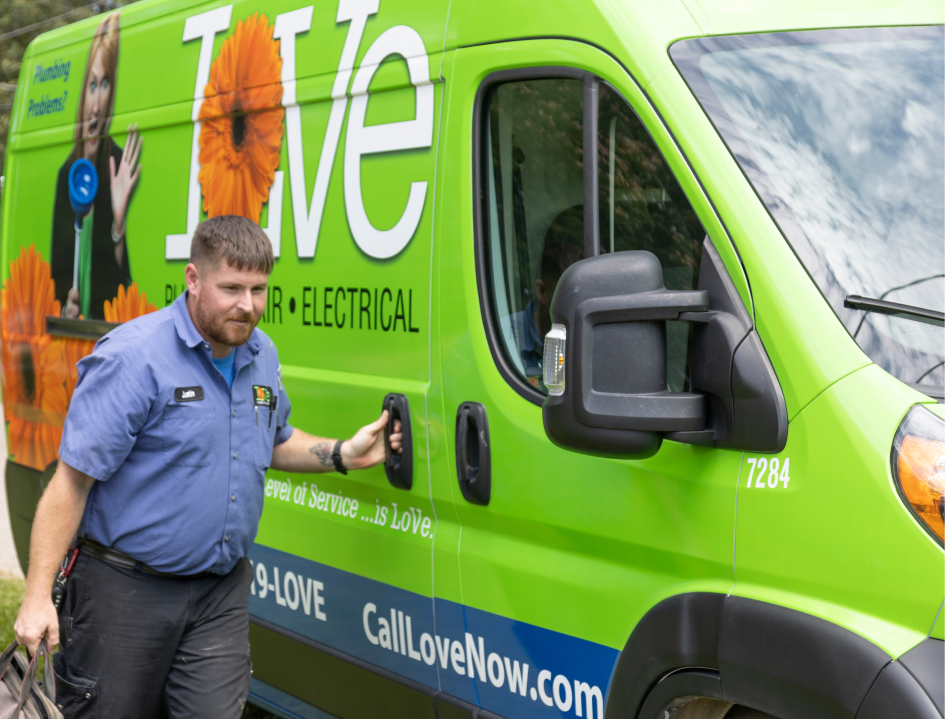Electrical System Components: A Complete Guide for Columbia, SC Homeowners
Your home’s electrical system is the backbone of modern living, powering everything from lights and appliances to heating and cooling. But how does it all work?
Understanding key electrical system components—like wiring, circuit breakers, and power sources—can help you make informed decisions about safety, efficiency, and upgrades.
Whether you’re updating an older home in Shandon or Earlewood or securing compliance with Richland County electrical codes, this guide covers everything you need to know.
Introduction to Electrical Systems
Electricity powers homes, businesses, and cities, making daily essentials like lighting, refrigeration, and climate control possible.
An electrical system is a network of components designed to generate, transmit, and distribute electrical power safely and efficiently.
These components, including wiring, circuit breakers, outlets, and energy sources, work together to deliver electricity where it’s needed while preventing overloads and hazards.
Understanding electrical components is key to safety, efficiency, and code compliance in homes, businesses, and industrial facilities.
Key Electrical System Components Explained
Electrical systems depend on power sources (solar panels, generators) and protective devices (circuit breakers, surge protectors) to guarantee safe, efficient energy distribution.
Understanding these components aids in power reliability, efficiency, and upgrades, especially for historic homes in Shandon or high-demand HVAC systems in Northeast Columbia.
Power Sources and Energy Generation
Electricity comes from various sources, each with unique efficiency and applications. Knowing your options helps with energy use, backup power, and sustainability.
Batteries, Generators, and Solar Panels
- Batteries store energy for later use, making them essential for solar power systems and backup power during outages.
- Generators offer backup power during blackouts, essential in storm-prone areas like Lake Murray and Five Points. Check out Love’s guide on choosing the right backup generator for your home.
- Solar panels cut energy costs and reduce environmental impact but rely on installation, sunlight, and battery storage for efficiency.
Challenges of Renewable Energy Integration
While solar energy is growing in popularity, integrating it into the power grid comes with challenges:
- Grid Compatibility: Solar panels produce DC power, requiring inverters and smart meters to convert and sync with the AC grid.
- Energy Storage Issues: Without battery storage, excess solar power generated during the day goes unused at night, leading to inefficiencies.
- Local Regulations: Areas like Richland County may have specific permit requirements for solar panel installations to provide grid stability and safety.
- Check South Carolina’s latest building codes to assure compliance before installing solar energy systems.
As technology advances, solutions like smart grids and decentralized power systems are making renewable energy more accessible and efficient for homeowners in Columbia, SC.
Conductors, Wiring, and Connectivity
Electrical wiring is the backbone of any system, providing safe and secure power distribution throughout a home or business.
Choosing the right wire type, material, and gauge is essential for preventing overheating, reducing energy loss, and ensuring compliance with local electrical codes.
Types of Wires and Cables
Copper vs. Aluminum:
- Copper wiring is highly conductive, durable, and resistant to corrosion, making it the preferred choice for most residential applications.
- Aluminum wiring is lightweight, cost-effective, and used in high-voltage applications, but needs special connectors to prevent hazards.
Stranded vs. Solid Core Wiring:
- Stranded wires, made of twisted copper strands, offer flexibility, ideal for appliances, extension cords, and movable areas.
- Solid core wires are a single piece of copper, providing better conductivity and durability for in-wall wiring and permanent installations.
Choosing the Right Gauge and Material
Wire gauge determines how much electrical current a wire can safely carry. Using the wrong gauge can lead to overheating, power loss, or electrical failures.
- Thicker wires (12 or 10 AWG) power ovens, dryers, and HVAC systems, crucial for Columbia’s hot summers when air conditioners run at full capacity.
- Thinner wires (14 or 16 AWG) are common for lighting circuits and outlets in standard rooms.
- Outdoor and wet-area wiring, especially in flood-prone areas like Gills Creek, needs weather resistance and GFCI protection.
Homeowners in Forest Acres and Wales Garden must follow Richland County and Columbia codes for wiring upgrades and safety standards.
Find Columbia’s local electrical regulations here.
Proper wiring prevents overheating, failures, and fire hazards. In Shandon or Earlewood, upgrading outdated knob-and-tube wiring or fuse boxes is recommended for safety.
Circuit Protection and Safety Devices
Electrical systems must include circuit protection devices to prevent hazards like electrical fires, short circuits, and power surges.
These safety components act as the first line of defense against overloads and faulty wiring, confirming your home or business remains protected.
Fuses, Breakers, and Surge Protectors
Fuses:
- Small, replaceable components designed to break the circuit when too much current flows through.
- Found in older homes and some appliances, but require replacement after they blow.
- Historic homes in Shandon and Earlewood may have fuse boxes, which should be upgraded to modern circuit breakers for safety.
Circuit Breakers:
- Automatically trip (shut off) when they detect an electrical overload or short circuit.
- Unlike fuses, breakers can be reset rather than replaced.
- Essential for high-demand homes in Northeast Columbia and Blythewood, where modern HVAC systems can push electrical loads to their limits.
Surge Protectors:
- Absorb excess voltage from power surges caused by lightning, grid fluctuations, or large appliances turning on and off.
- Protect sensitive electronics like computers and TVs.
Lake Murray and Five Points face storm-related outages. Dominion Energy SC advises whole-home surge protectors to prevent voltage spikes.
Stay updated on South Carolina’s power outage reports.
Testing Faulty Devices Without Professional Tools
While complex electrical issues require a licensed electrician, homeowners can perform basic electrical troubleshooting with simple techniques:
- Check for a Tripped Breaker: Locate the panel and switch any “off” breaker back “on” to restore power.
- Test an Outlet with Another Device: Plug in a working appliance (like a lamp) to check if the outlet is functional.
- Use a Non-Contact Voltage Tester: These handheld tools let you detect live wires without direct contact.
- Reset a GFCI Outlet: If an outlet in a bathroom, kitchen, or outdoor area isn’t working, press the reset button on the outlet itself.
For frequent breaker trips, flickering lights, or burning smells, call a licensed electrician to prevent hazards and ensure safety.
Loads and Energy Consumption
Electrical systems power multiple loads, which are devices that consume electricity. Knowing their impact helps optimize efficiency, cut costs, and prevent overloads.
Motors, Lights, and Appliances: Power Demands & Efficiency Ratings
Motors:
- Found in HVAC systems, refrigerators, and ceiling fans, motors require a significant amount of power, especially when starting up.
- Air conditioners in Columbia’s hot summers strain systems, especially in Blythewood where homes have high power demands.
- Upgrading to energy-efficient motors with variable speed settings can reduce energy waste.
Lighting:
- Traditional incandescent bulbs waste a lot of energy as heat, making them inefficient.
- LED bulbs consume up to 75% less electricity and last significantly longer.
- Homes with outdated wiring, like those in Shandon and Earlewood, may benefit from an LED upgrade to reduce overall load and increase efficiency.
Appliances:
- Refrigerators, dishwashers, and dryers use continuous power, while microwaves and coffee makers consume energy intermittently.
- Energy Star-rated appliances are designed to use less electricity while maintaining performance.
- In flood-prone areas like Gills Creek, installing GFCI outlets for appliances in basements or outdoor spaces can prevent electrical hazards during storms.
South Carolina has set energy efficiency standards for residential buildings to reduce overall energy waste.
Check the state’s energy efficiency certification programs to see how your home can benefit.
Energy-efficient devices and power management prevent overloads, reduce bills, and maintain system efficiency. Consider an energy audit for frequent trips or high costs.
Electrical System Types: AC vs. DC & Residential vs. Industrial
Not all electricity is the same—Alternating Current (AC) and Direct Current (DC) serve different purposes in electrical systems.
Understanding their roles helps homeowners and businesses make informed decisions about power efficiency, appliance compatibility, and system upgrades.
Alternating Current (AC) vs. Direct Current (DC)
Alternating Current (AC):
- Most homes and businesses use AC power because it is easily transmitted over long distances with minimal energy loss.
- Power from utility companies like Dominion Energy SC is supplied as AC.
- Works well for large appliances, lighting, and HVAC systems.
Direct Current (DC):
- Found in batteries, solar panels, and electronic devices like laptops and smartphones.
- More efficient for low-voltage applications but loses energy when transmitted over long distances.
- Requires an inverter to be converted into AC power for home use, which is a key challenge in integrating solar power systems with the grid.
| Feature | AC Power | DC Power |
| Common Uses | Home appliances, HVAC, lighting, power grid | Batteries, solar panels, electric vehicles, small electronics |
| Transmission | Efficient over long distances | Loses power quickly over distance |
| Energy Efficiency | Works well for most household applications | More efficient for low-voltage or stored energy systems |
| Limitations | Not ideal for battery storage | Requires conversion to AC for household use |
Use Cases and Limitations
South Carolina homeowners may see rising electricity costs due to proposed rate increases by Dominion Energy SC. Read more about these potential changes.
With renewable energy growing in Northeast Columbia and Blythewood, homeowners are integrating DC solar panels into AC systems for efficiency, lower costs, and reliability.
Emerging Technologies in Electrical Components
As technology advances, electrical systems are becoming smarter, safer, and more sustainable.
Innovations like smart grids, decentralized protection, and eco-friendly materials are shaping the future of energy distribution and consumption.
See the latest changes in the 2021 code modifications.
Smart Grids and IoT Integration for Real-Time Monitoring
- Smart grids use digital technology to monitor and manage electricity flow more efficiently, reducing outages and improving energy distribution.
- IoT devices like smart meters and connected breakers enable real-time tracking, efficiency monitoring, and remote appliance control.
- In areas prone to power fluctuations, such as Fort Jackson’s military housing, smart grids help stabilize supply and prevent sudden electrical failures.
Decentralized vs. Centralized Circuit Protection: Pros & Cons
Electrical safety systems are shifting from centralized to decentralized models, impacting how homes and businesses manage power distribution.
| Feature | Centralized Protection | Decentralized Protection |
| Setup | Single breaker panel controls entire home or building | Multiple smaller protection points within circuits |
| Pros | Easier maintenance, common in traditional homes | Reduces impact of single failure, improves local fault detection |
| Cons | If the main breaker fails, the whole system is at risk | Higher initial cost, requires smart technology for efficiency |
Decentralized protection enhances safety and efficiency by independently managing electrical zones in smart homes and businesses.
Sustainable Materials in Modern Conductors
- Aluminum alloys and graphene-based materials offer eco-friendly copper alternatives while maintaining conductivity.
- Recycled wiring and lead-free soldering help lower carbon footprints in electrical manufacturing.
- Cities like Columbia, SC benefit from sustainable conductors, boosting energy savings and reducing environmental impact.
With ongoing advancements in smart grids, safety mechanisms, and sustainable materials, the future of electrical systems is more efficient, resilient, and eco-friendly than ever before.



